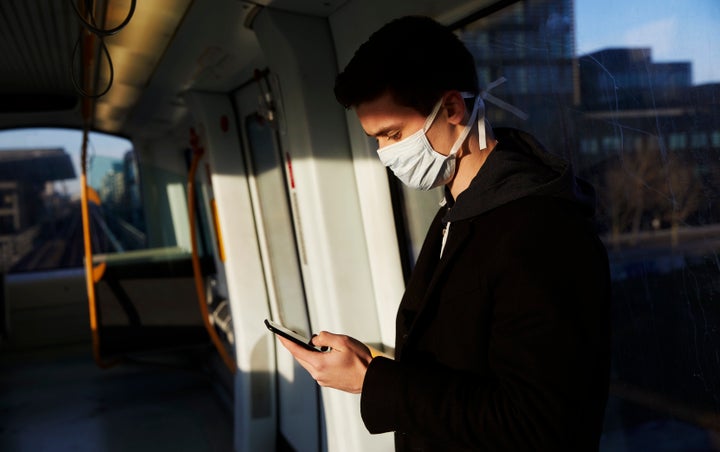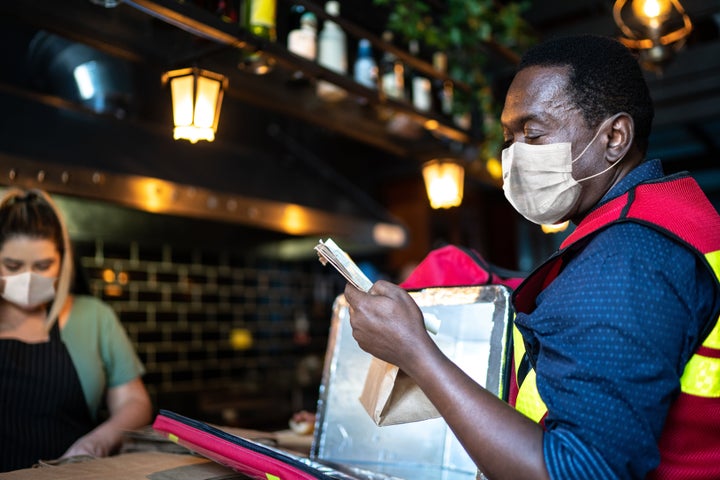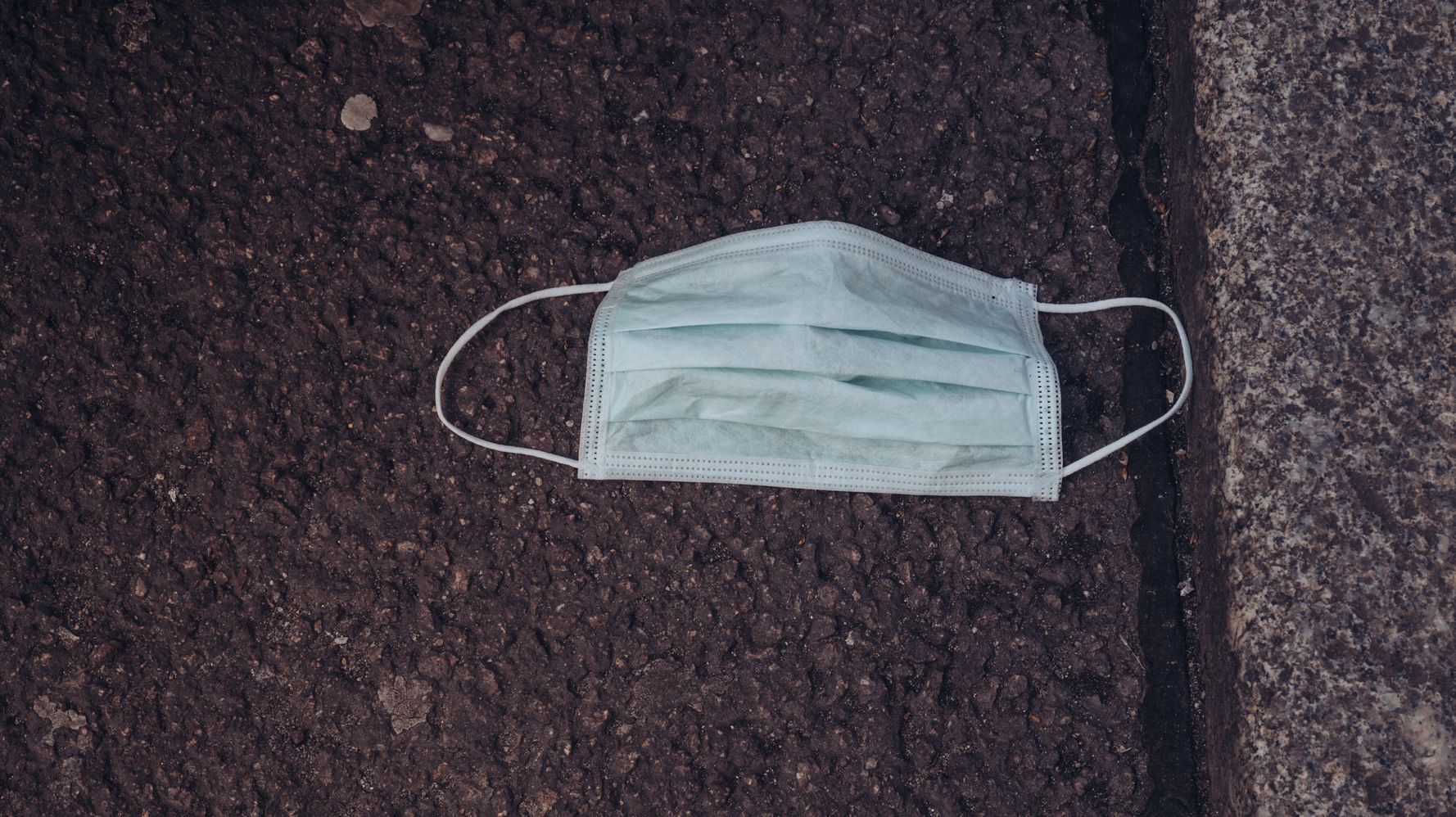[ad_1]
How many times in the last few months have the words “When things get back to normal…” come out of your mouth?
“When things get back to normal, I’m finally using all my vacation days and taking that trip to Italy.”
“When things get back to normal, I’m never saying ‘no’ to an invite from my friends to go out on the weekends.”
Seven months into the pandemic, the refrain of “when things get back to normal” has become common. COVID fatigue is very, very real. Even as schools, movie theaters, gyms and hair salons open and some states allow indoor dining, daily life is a faint echo of what we knew it to be less than a year ago.
Pining for better days, for “getting back to normal” as soon as possible, makes sense as a coping mechanism. But is it the healthiest outlook to take, when expert after expert warns that it will be quite some time until “normalcy” ― at least as we defined it pre-pandemic ― returns?
Getting back to normal isn’t “going to be a light switch that you turn on and off,” Dr. Anthony Fauci, the nation’s top infectious disease expert, told Americans in the spring. Realistically, the U.S. won’t get back to something like “normalcy” until late 2021, when a vaccine for COVID-19 could be widely distributed, Fauci said in September.
Some things have also irrevocably changed. Temporary layoffs are becoming permanent job losses for wide swaths of American workers. Certain industries are at risk of being wiped out completely. An estimated 60% of small business closures during the coronavirus pandemic are now permanent, according to data from Yelp.
“Normal” will look considerably different post-COVID. Just like in the aftermath of the Sept. 11 terror attacks, we’ll have to adjust to new security precautions. Temperature checks and lower-capacity restrictions in public places will likely become commonplace, for starters. We might become a mask-wearing culture.
And for the families and friends of the more 220,000 Americans who have died because of COVID, the prospect of “getting back to normal” without their loved ones around is a complicated matter.
As comedian Rhea Butcher put it recently, at this point, we’re “not in a quarantine, but just an unending, normalized pandemic.”
Given that disheartening reality, what we need is realistic optimism and a kind of tempered hope, according to Ryan Kelly, a psychologist in Charlotte, North Carolina.
“We need hope to thrive,” he told HuffPost. “However, unrealistic optimism can be a problem, too ― it’s the person who says ‘This glass of water is half full and we’ll never need water again!’”
“A post-COVID world should be remarkably different, meaning some things may not feel ‘normal’ or ‘comfortable.’ But we will adapt to that, too, and be stronger for it.”
– Ryan Kelly, psychologist
When Kelly’s clients bring up their hopes for a “return to normal,” he gets it. “What they usually mean is that they want to feel safe and comfortable again, which is understandable. But I don’t think it’s healthy to aspire to a return to the normal of yesterday.”
Kelly, a big comic book fan, thinks it would be wise to lean into Marvel creator Stan Lee’s famous “Excelsior!” motto when times get tough. “Excelsior” is a Latin word meaning “ever upward” ― not “ever the same,” Kelly explained.
“We are designed to adapt and grow, not simply to ‘exist,’” he said. “And that can only be achieved by overcoming adversity and embracing progressive change.”
A post-COVID world should be “remarkably different,” he said, “meaning some things may not feel ‘normal’ or ‘comfortable.’ But we will adapt to that, too, and be stronger for it.”
Instead of fixating on a quick return to normal, we should mentally prepare for a difficult 2021 so we can be pleasantly surprised if and when a positive development on the COVID front does occur, said Elisabeth LaMotte, therapist and founder of the DC Counseling and Psychotherapy Center.
The best advice LaMotte has received about psychologically navigating the pandemic came from a therapy client in late March. This woman brought up U.S. Navy Vice Adm. James Stockdale’s reflections on his almost eight years as the highest-ranking naval officer prisoner of war in Vietnam.
Stockdale observed that his fellow POWs who fared well emotionally were the ones who realized they could be living in captivity for an exceedingly long time. Meanwhile, LaMotte said, “the optimistic prisoners, who pinned their hopes on being released, fell apart.”
This idea became known as the “Stockdale paradox.”
“This pandemic and its restrictions are obviously nothing like being held captive as a war prisoner, but it is optimal to prepare for the long haul,” LaMotte said.
To that end, we should focus on what we can control right now. LaMotte recommends using idle hours to discover a productive routine, nurture relationships, exercise regularly and take good care of yourself.
“No one wants to live like this forever, and it is adaptive to remain hopeful,” she said. “But it is also emotionally prudent to assume that this is our enduring new normal, at least for the foreseeable future.”

Is there a better way to look at all this than “getting back to normal”?
If the idea of “getting back to normal” is unhelpful, is there a more tempered phrase ― something that’s hopeful but that acknowledges we might be in this for the long haul?
Elizabeth McCorvey, a psychotherapist from Hendersonville, North Carolina, said she’s taken to saying “When things open back up…” since it touches on a technical aspect rather than the more abstract idea of “normalcy.”
“I tell people to think about what you’re actually saying when you say ‘back to normal,’” she said. “Are you saying ‘back to normal’ when you really mean ‘when I felt safe, loved, in routine, emotionally and economically stable and secure’? If so, try saying that.”
It can help your mood to focus less on the broad (“getting back to normal”) and instead hone in on exactly what you’re missing. Sometimes, when your goals are more precise, there will be actionable things you can do to get closer to them.
“Maybe you’re saying ‘I wish things were back to normal’ when you really mean ‘I wish I could hug my mom,’ or ‘I wish I had a stable sense of my finances,’” McCorvey said. “Having a specific sense of what you need means you can have a more specific action plan to get back to a healthier state.”
The reality is, “normal” wasn’t working for many of us.
There’s another point to note: For many of us, what constituted “normal” before COVID wasn’t exactly a place worth returning to.
If we look at this utterly exhausting year as a whole ― the pandemic, the social unrest over racial injustice, the economic crisis ― a case can be made for not wanting to return to “normal” as it once was.
“Normal” was living in an industrialized nation where 87 million people were uninsured or underinsured, and more than 30,000 people died every year because they couldn’t get to a doctor when they needed to see one. “Normal” was a system that tied health care to employment, which meant that between February and May of this year, more than 5.4 million people lost their health insurance coverage after being laid off ― the highest increase ever recorded, right in the middle of a global disease outbreak.

“Normal” was an America where 38.1 million people ―11.8% of the population ― lived in poverty, and many had to work two jobs just to make ends meet. (The numbers are getting worse, not better, as the pandemic continues.) As many of us work from home and stay more or less locked down, plenty of working-class Americans are still carrying on as “normal,” putting themselves at heightened risk for COVID so people can get things delivered and stores and restaurants can stay open. COVID has disproportionately affected low-income people and people of color.
“Normal” was a country where we could elect a Black president but still see Black people killed and brutalized by police with depressing regularity and few consequences.
Instead of idealizing that old “normal,” it might be smarter to use this time to figure out a system that’s safer and and healthier for all of us, McCorvey said. If we play our cards right, she believes, COVID-19 and our current reality could be a huge wake-up call.
“You think it’s hard living in a world where you’re not sure who is safe and who’s not? Where you have to be mindful of which buildings you go in, and some days, circumstances mean it’s safer just to not leave the house? That’s every day for a lot of BIPOC folks,” McCorvey said. “And a lot of disabled folks. And a lot of neurodivergent folks. And a lot of trans folks.”
Now that we’ve all gotten a taste of that, McCorvey said, it’s worth asking: “What’s my role in creating a safer and healthier community so no one has to deal with that?”
“That’s the ‘normal’ I’m interested in cultivating,” she said.
[ad_2]
Source


